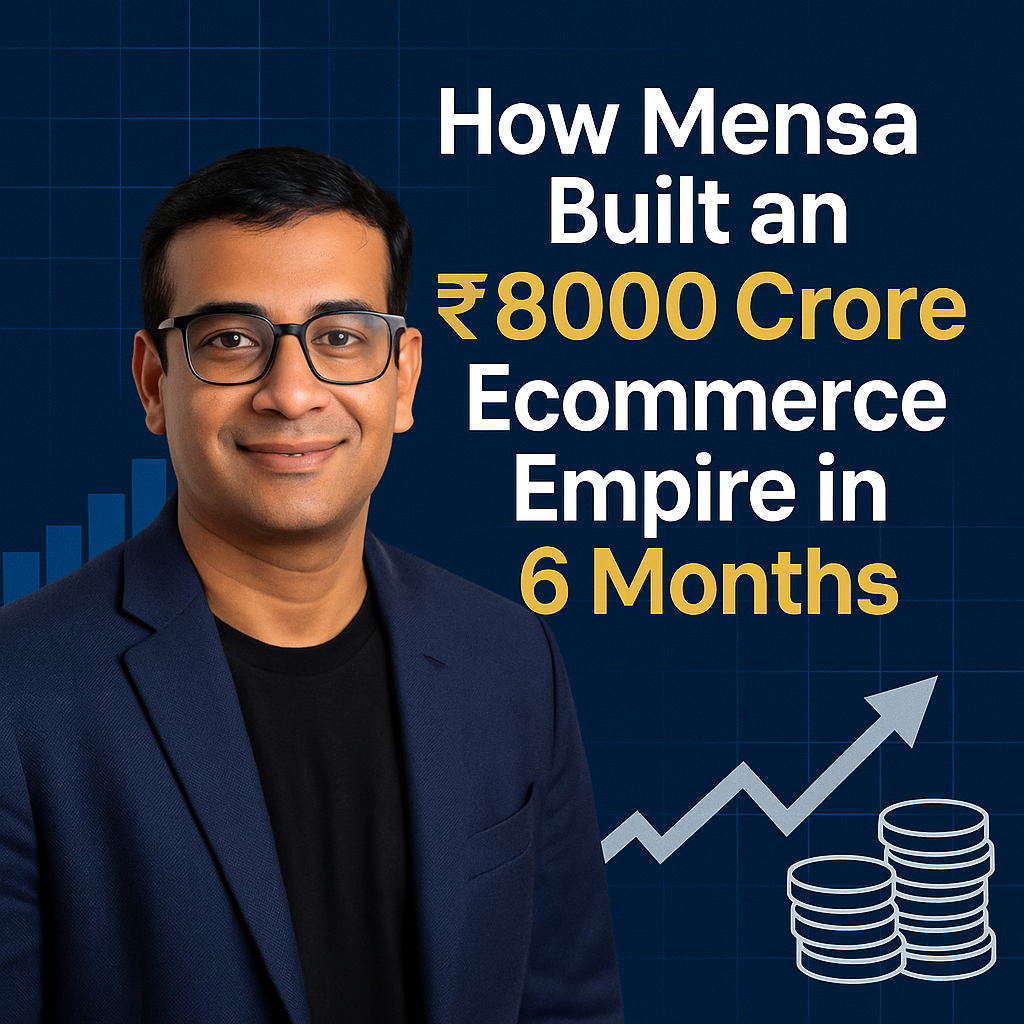10 years – that’s how long it took Zomato and Zerodha to become unicorns.
6 years – that’s how long Mamaearth took to reach the same status.
But Mensa Brands? Just 6 months.
Yes, you heard that right. Mensa Brands became India’s fastest-ever unicorn, hitting a billion-dollar valuation in just six months, and they were even profitable in the first six months of their journey.
This company is scaling more than 20 DTC brands simultaneously—brands like MyFitness, Villain, Dennis Lingo, and many more. It is India’s first ecommerce roll-up company and has cracked something super unique in India’s growing ecommerce market.
Let’s break it down.
The Secret Behind Mensa Brands’ Success
Mensa was started by Ananth Narayanan, a seasoned veteran of India’s ecommerce boom. He’s an ex-McKinsey consultant, ex-co-founder and CEO of Medlife, and ex-CEO of Myntra.
Mensa is a house of brands—but unlike traditional companies, it doesn’t build its own brands from scratch. Instead, it acquires promising DTC brands and scales them up from a “1 to 10” journey.
Inspired by Thrasio: The Ecommerce Roll-Up Model
Mensa’s business model is inspired by the US-based company Thrasio, which capitalized on the rise of third-party sellers on Amazon. These sellers would often get stuck at $3–5 million in revenue, unable to scale.
Thrasio would acquire these businesses, optimize everything from product listings to supply chain, and scale revenues by 30% in just a couple of months.
This roll-up model became the foundation for Mensa Brands. However, Mensa is very different from Thrasio in several ways.
The Mensa Model: Made for India
Mensa acquires a minimum 51% stake in fast-growing ecommerce brands across categories like apparel, home, personal care, beauty, and even content.
They aim to scale these brands over a 5-year partnership with the original founders. Mensa has already acquired 20+ companies, and 7 of those contribute 80% of their revenue.
Their goal? Acquire 40–50 brands and scale 20% of them to ₹1,000+ crore revenue each.
Why the Indian Market is a Goldmine
Two key insights make Mensa ultra-bullish on Indian ecommerce:
- Rising Indian Consumption
India is the 5th largest consumer market in the world and is on track to reach the 3rd spot by 2026.
Private consumption makes up a massive 60% of India’s GDP. - Internet Penetration
From 41% to 55% in just four years, internet access has exploded—especially in rural India, where users now outnumber urban users.
This has supercharged online-first brand discovery and buying behavior.
A Largely Unbranded Market
Categories like food, apparel, and personal care are still largely unorganized. For example:
- 50% of food market is unorganized.
- 65% of apparel market is unorganized.
As incomes grow, Indians are more willing to pay premiums for brands they trust—making it the perfect time to build household brands.
Going Beyond Online: Offline and Content Strategy
Unlike Thrasio, Mensa is also building brands for offline and content-driven expansion.
They understand that every stage of a brand’s journey needs a different approach:
- 0–20 Cr: Focus on product quality and reviews
- 20–100 Cr: Invest in performance marketing and SKUs
- 100–500 Cr: Open offline stores and build communities
They’ve even hired experts like Nandan Tandulkar from Aditya Birla Fashion to head offline growth.
Additionally, Mensa acquired content platforms like MensXP and iDiva, giving them direct access to 35 million+ monthly users to promote their brands.
Going Global: The Masterstroke
30% of Mensa’s revenue now comes from international markets like the US, UAE, and Canada.
By listing their brands on global ecommerce platforms (e.g., Amazon UAE, Noon), they leverage existing Indian product reviews for trust and visibility abroad.
Thanks to economies of scale, they also:
- Negotiate better prices with suppliers
- Centralize talent and marketing efforts across brands
Also Read : Will Mr. Beast Make ₹1000 Crores from India?
Conclusion
Mensa Brands has built a robust, scalable ecommerce empire by combining the roll-up model, a deep understanding of Indian consumers, and global expansion strategies. Unlike Thrasio, they focus not just on hot products but on building brands that can become household names in India and beyond.
Their story is a masterclass in modern ecommerce strategy, tailored for a complex yet promising market like India.
FAQs
1. What is a roll-up ecommerce company?
A roll-up ecommerce company acquires and scales multiple direct-to-consumer (DTC) brands under one umbrella. Instead of starting new brands, it builds on existing ones with growth potential.
2. Who founded Mensa Brands?
Mensa Brands was founded by Ananth Narayanan, former CEO of Myntra and co-founder of Medlife.
3. How did Mensa grow so fast?
Mensa leveraged India’s growing ecommerce potential, strategic brand acquisitions, performance marketing, offline expansion, and global market access to accelerate growth.
4. Is Mensa similar to Thrasio?
While Mensa’s model was inspired by Thrasio, it differs significantly in strategy, target market, offline expansion, and its focus on brand-building over just selling products.
5. Which are some brands owned by Mensa?
Mensa owns popular DTC brands like MyFitness, Villain, Dennis Lingo, and Pebble among others.










